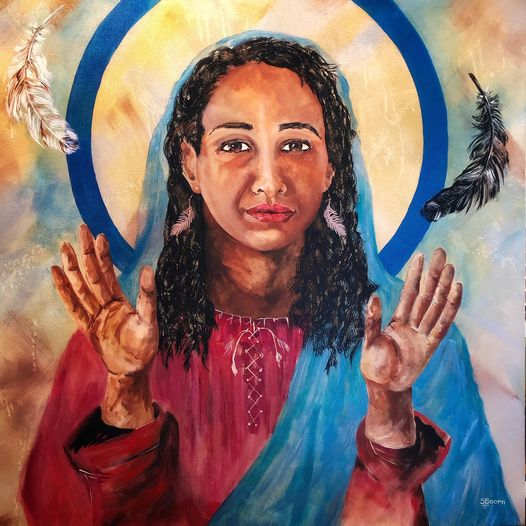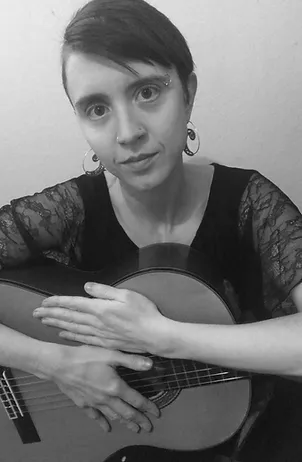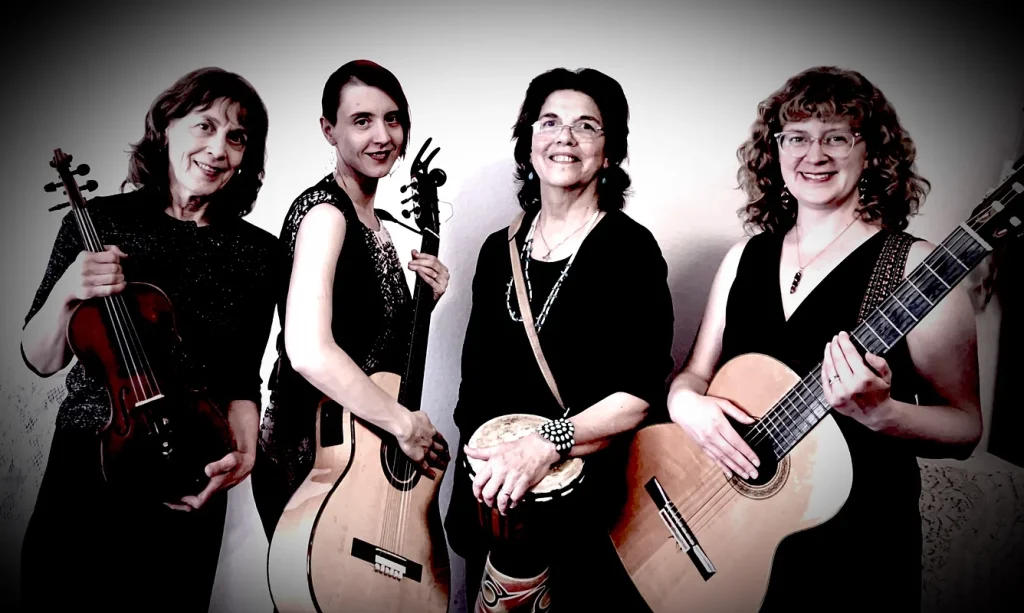Interview with Alison Kohler-Newvine

Christ-Sophia by Stacy Boorn
Alison Kohler-Newvine recently interviewed me about my songwriting. Alison sings with Spiral Muse, a musical group “dedicated to Sacred Female Power, the Wisdom of Mother Earth and the Spirit of Fierce Compassion rising up during these tumultuous times.”

Alison is a songwriter and the group’s webmaster, archivist, blogger, and recording engineer. Also, Alison is a published author and a licensed psychotherapist in private practice.
Alison is a songwriter and the group’s webmaster, archivist, blogger, and recording engineer. Also, Alison is a published author and a licensed psychotherapist in private practice.
Alison’s questions are in bold purple font and my responses are below her questions.
Who is the Christ-Sophia?
The name “Christ-Sophia” is a symbol of divinity that makes equal connection between genders, thus providing a model for a community in which all live in partnership. “Christ-Sophia” draws from the biblical and historical connection between Christ and Wisdom, Sophia in the original Greek language of the Christian Scriptures. Sophia, the Greek word for Wisdom, is a resurrected biblical female divine image that opens new possibilities for liberation, justice, and peace. New Testament writers link Christ to Wisdom, a female divine name in the Hebrew Scriptures. Wisdom (Hokmah in Hebrew) symbolizes creative, redemptive, and healing power. In their efforts to describe this same power in Christ, the apostle Paul and other writers of the Christian Scriptures draw from the picture of Wisdom. Paul refers to Christ as “the power of God and the Wisdom (Sophia) of God” (1 Corinthians 1:24), and states that Christ became for us Sophia from God” (1 Corinthians 1:30). The book of Proverbs describes Wisdom as the way, the life, and the path (Proverbs 4). The writer of the gospel of John refers to Christ as “the way, and the truth, and the life” (John 14:6). An early Christian writer declared Sophia to be the most ancient and appropriate title for Jesus.
The image of “Christ-Sophia” holds promise for inspiring social justice through shared power. The name “Christ-Sophia” suggests equal connection instead of dominance and submission in relationships. Christ-Sophia images equal gender connection in that the name “Christ” traditionally denotes male divinity, and Sophia is a female name for the Divine. Also, Christ-Sophia links races, connecting the Jewish Jesus to Wisdom in both ancient and hellenized Judaism and drawing from both Egyptian and Greek sacred symbols. Bringing Christ and Sophia together can inspire powerful partnerships that contribute to equity, justice, and peace in our world. My book In Search of the Christ-Sophia: An Inclusive Christology for Liberating Christians fully explores this divine name and image.
What feminist values inform your writing?
Informing my writing are core feminist values of gender equality, egalitarian communities, collaboration, diversity, justice, peace, care of the earth, creativity, freedom to become all we’re created to be, respect for all people and all creation. My writing prioritizes equal social, political, economic, and religious rights for women and all female-identified persons; prioritizing those who are most oppressed means freeing everyone else. My writing is also informed by the intersectionality of gender, race, class, and age discrimination and other forms of injustice.
The more I advocated these feminist values, the more I realized that at the foundation of our patriarchal culture is an image of a male God, sanctioning patterns of dominance and submission. More and more I was understanding that the strongest support imaginable for the dominance of men is this worship of an exclusively masculine Supreme Being. So my call expanded to writing, preaching, and teaching on the inclusion of the Divine Feminine. Female names and images of the Divine help to dismantle patriarchal theology and structures that result in multiple, intersecting forms of oppression and violence throughout the world. Patriarchy is at the root of systemic evils such as sexism, misogyny, racism, heterosexism, classism, militarism, ableism, and exploitation of the earth. Exclusively male names and images of Deity form the foundation for patriarchy. The Divine Feminine brings healing by affirming the sacred value of all people and all creation.
My writing expanded from persuasive discourse to Divine Feminine rituals. I realized the need to go beyond biblical and theological explanation to ritual experience, to engage the imagination as well as the intellect to bring change. So, I began writing rituals focused on the Divine Feminine. I remembered the prominent place given to hymn singing in the tradition where I grew up and how much I loved singing hymns. I began writing lyrics to familiar hymn tunes with the hope of contributing to an expansive theology and an ethic of equality and justice. Our words have great power and words we sing have even greater power to shape our beliefs and actions because the music embeds the words in our memories. My song lyrics feature Divine Feminine names and images and themes of justice, peace, equity, and care of creation. Also, my lyrics always use “we,” instead of “I” as in many hymns, to emphasize the feminist value of community and collaboration.
Womanist values also inform my writing. I’m a ministry partner with The Gathering, A Womanist Church, and co-authored a book on the church. Womanist values and rituals have expanded my spirituality and my writing. Womanist values include artistic expression and other feminist values, expanding them through Black women’s experiences of triple oppressions of gender, race, and class. The social priorities of The Gathering are racial equity, LGBTQIA equality, and dismantling PMS (patriarchy, misogyny, and sexism). The Gathering also emphasizes collaboration, having ministry partners instead of members. We collaborate with Equity for Women in the Church, an egalitarian organization I co-chair, also with a mission of dismantling patriarchy and white supremacy. In addition, the Gathering collaborates with New Wineskins, an egalitarian ritual community I co-lead, where we give affirmation action to the Divine Feminine.
In the first verse of “O Come, Christ-Sophia,” you include the line, “Come bless us and challenge us to make life anew.” How does Christ-Sophia challenge us?
The very name and image of Christ-Sophia challenges us to make “life anew.” Christ-Sophia challenges our language which forms a foundation for beliefs and actions. Christ-Sophia brings the Divine Feminine into the Christian tradition, challenging the patriarchal leadership, language, and structures.
Christ-Sophia challenges us to heal our wounded world. Sophia Wisdom has for the most part been stifled, demeaned, or ignored for centuries. Our world is in deep need of the healing that Sophia Wisdom can bring. She challenges us to see, to feel, and then to act as if the future depended on us, because it does.
Sophia Wisdom challenges us to go with Her on healing paths of peace. “All Her paths are peace” (Proverbs 3:17). She calls us bring justice and peace in all our relationships and communities. Sophia Wisdom also shows us ways to use our unique gifts to contribute to justice and peace in our world wounded by violence against people and the earth. She challenges us to overcome injustices and to co-create a world of shared power, equity, justice, liberation, and peace.
The second verse references labor and birthing. Why are these themes important and how are they represented in traditional versus liberating Christmas music?
Below are my lyrics to “O Come, Christ-Sophia,” followed by the traditional Christmas carol to this tune.
O come, Christ-Sophia, full of grace and wisdom;
come bless us, come challenge us to make life anew.
Come bring us power, beauty, hope, and harmony.
We long for your coming, labor for your birthing,
for you are our hope of peace, our power for change.
Come, Christ-Sophia, break down walls and free us.
Rejoice all you people, sisters, brothers, join now
to sing of a bright new day just dawning for all.
Sing now a new song; sing with jubilation.
REFRAIN
O come now, Christ-Sophia; O come, now Christ-Sophia;
O come now Christ-Sophia, Wisdom and peace.
O come, all ye faithful, joyful and triumphant,
O come ye, O come ye to Bethlehem!
Come, and behold Him, born the King of angels!
Sing, choirs of angels; sing in exultation;
sing, all ye citizens of heaven above!
Glory to God, all glory in the highest!
Yea, Lord, we greet Thee, born this happy morning;
Jesus, to Thee be all glory given!
Word of the Father, now in flesh appearing!
Refrain:
O come, let us adore Him;
O come, let us adore Him;
O come, let us adore Him, Christ, the Lord!
My carol includes images of labor and birthing. The traditional lyrics include “born,” but no words or metaphors to include the processes of labor and birthing.
My carol includes the Divine Feminine breaking down walls of exclusion and bringing new life, and themes of peace, hope, liberation, and collaboration for new life. The traditional words “King” and “Lord” denote hierarchy, and all the masculine references support patriarchy. The third verse of the traditional carol also includes “Father.” A verse in the Hebrew Bible with the image of birthing has been mistranslated through the centuries to support patriarchy. Deuteronomy 32:18 is accurately translated “You were unmindful of the Rock that bore you; you forgot the God who gave you birth.” (Deuteronomy 32:18). The Hebrew verb is accurately translated “bore,” not “fathered,” as in the New International, New King James, Jerusalem Bible, and many other versions. The translation “You forgot the God who fathered you” is totally incorrect. Over centuries translators and commentators have ignored female imagery in this passage and many others. Traditional hymns and carols reflect these patriarchal biases.
Labor and birthing themes are important because not only do they denote female processes, but also they refer to involving all genders in labor and birthing new language, new visual images, new ideas, new actions—a new day of beauty, hope, and harmony for all.
You’ve created many audio-visual experiences that weave together your songs, photographs of social justice actions and feminist faith communities as well as original artwork. Would you tell us about your choices of artwork in the video for “O Come, Christ-Sophia?”
This video features Divine Feminine and racially diverse artwork. Female divine visual images, along with female divine names in my lyrics, help to dismantle patriarchal theology and structures that result in multiple, intersecting forms of oppression throughout the world. Reclaiming the Female Divine in visual imagery and language empowers our work together for equality, social justice, peace, and sustainability. Including multicultural female divine images in our sacred rituals affirms the sacred value of females of all races who continue to suffer from violence and abuse. We contribute to racial justice and equity by changing the traditional symbolism of darkness as evil or ominous and light as good to symbolism of both darkness and light as good. My lyrics and artwork in this video and in my other song videos use positive images of darkness to affirm the sacred value of people of color in the divine image. In other song lyrics I include “Holy Darkness,” “Sacred Darkness,” “Creative Darkness.” The artwork in all my videos also symbolizes darkness as creative bounty and beauty, birthing and nurturing all life.
The video “O Come, Christ-Sophia” begins with Katie Ketchum’s beautiful painting for the album cover of Sing of Peace. This album brought me into collaboration with Spiral Muse, a delightful musical group who recorded ten of my Christmas carols. This video also includes a lovely “Christ-Sophia” painting by Katie Ketchum, lead musician at Ebenezer/herchurch Lutheran in San Francisco.
Also, for “O Come, Christ-Sophia” video I chose compelling “Christ-Sophia” paintings by Stacy Boorn, pastor of herchurch. These paintings illustrate the power and beauty of dark female divine visual images.
This video includes artwork by other gifted members of herchurch. Alice Heimsoth’s photos from herchurch and Elaine Chan-Scherer’s “Our Lady of Charity: La Caridad” painting add beautiful diversity to the video.
David Clanton contributes artistic photos from Imagine God! A Children’s Musical Exploring and Expressing Images of God and Equity for Women in the Church events.
I collaborated with Larry E. Schultz, minister of music for Pullen Memorial Baptist Church in Raleigh, North Carolina, on this children’s musical seeking to instill in children divine female names and images. Equity for Women in the Church, which I co-chair, is an ecumenical multicultural organization with the big vision of facilitating equal representation of clergywomen as pastors of multicultural churches to transform church and society.
The video also features photos from The Gathering, A Womanist Church and
Association of Roman Catholic Women Priests, two other organizations striving to dismantle patriarchy and white supremacy.
The video concludes with Mirta Toledo’s lovely multicultural painting of Sophia, which graces the cover of my book In Search of the Christ-Sophia.
These artists honor me with their permission to use their artwork in this video. Other artwork is in public domain, not attributed to any artists. This artwork also illustrates lines in my lyrics.
Why is it important to rework traditional hymns rather than write new songs with new music?
I think it’s important to write new lyrics to traditional hymn tunes and to write new songs with new music. It has been a joy to collaborate with composer Katie Ketchum, who wrote new music for my songs published in Hersay: Songs for Healing and Empowerment. Also I’ve collaborated with composer Larry E. Schultz on songs that are published in my other songbooks.
My songs to traditional tunes have been the most popular. I hear from music leaders that many people are more receptive to new words to familiar tunes because they have something familiar to sing. A reviewer of one of my songbooks wrote that the “familiar tunes root participants,” while the Divine Feminine names and images move people beyond the divisions, prejudice, and narrowness that have plagued society and churches. These hymns, she wrote, are an “invitation to mainline Christianity to more faithfully seek the Holy One always beyond the limitations of our words and images.” The familiar tunes are a way of bringing the Divine Feminine into the Christian tradition. And the carol tunes, though originally written with Christmas themes, don’t seem limited to the Christian tradition. Carols are ubiquitous in many cultures during the Christmas season. “O Come, Christ-Sophia” is the first song I wrote. It was during the Christmas season when all the masculine words and images felt like stones pelting my spirit. I wondered what it would be like if we sang to adore “Her,” instead of “Him.” I didn’t just rework the traditional carol substituting “Her,” but wrote entirely new lyrics to this tune, as I’ve done with my other songs.
What is your hope for humanity at this moment of such acute political, humanitarian and ecological crisis?
Our world is in deep need of the healing that Divine Wisdom can bring. My hope is that political, social, and religious leaders will be guided by Her.
Our world is ravaged by war and other forms of violence. I hope for cease fire in the Middle East, Russia/Ukraine, and other places around the world. Although it may seem impossible at this time, I believe Sophia Wisdom can guide to peace and justice.
My hope is that “Mother,” Sophia, Ruah, Shekhinah, Shaddai, “Mother Eagle,” and other Divine Feminine images will continue to rise in our world to bring a new day of peace, equity, and freedom for all genders and races. Including female divine names and images gives sacred value to women and girls who for centuries have been excluded, ignored, cursed, and abused, and continue to be. When the Divine is seen as female, then women and girls are seen in Her image and thus respected and valued. My hope is that the Divine Feminine continues to bring transformation that contributes to equality, liberation, and justice.
I hope that our children and grandchildren grow up in a world without gun violence. Young people are following Sophia Wisdom to guide the way through March for Our Lives and other advocacy organizations.
My hope is that people throughout the world will follow Sophia Wisdom in healing our earth. Greta Thunberg embodies Wisdom as she inspires a global movement to address climate change to save our planet.
My hope is that people of all genders, races, abilities, and ages throughout the world have the freedom to become all we’re created to be in Her divine image.
